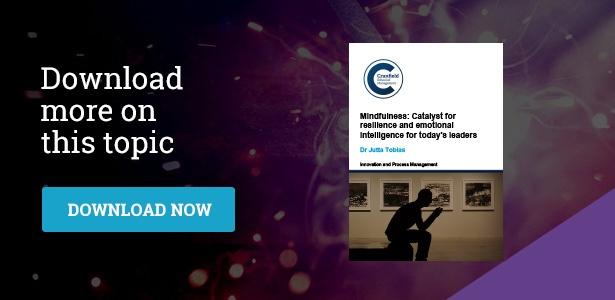
We know from leadership research that successful leaders stand out and achieve extraordinary results because they have higher self-awareness, and are better able to manage their thoughts and feelings in the midst of difficulty.
And because they are able to remain focused, they are better able to tolerate ambiguity when others get derailed.
Both of these are skills that can be trained. Both relate to emotional intelligence and resilience.
What does this mean?
Essentially, effective leadership does not require heroic John Wayne style quick-shot action.
Anyone can learn to develop the courage to stay calm and to really look, listen, and think through what is genuinely the most productive action in a difficult and challenging situation.
More often than our traditional, action-man-oriented perception of leadership would let us believe, jumping to the first best solution ends up being an inferior way to lead than to slow down in the face of danger.
What effective leaders do in such situations is they proactively uncover different interpretations and perspectives of the figurative tiger that’s out to get us.
They take the time to hear the voices of different stakeholders. Especially the ones that disagree with their world view.
And in doing so, they uncover truly innovative solutions to tricky problems, truly effective ways to stare the tiger down.
How can we translate this knowledge into action and enable leaders to stand out, systematically and reliably?
This is where the science and evidence-based application of mindfulness comes in.
Mindfulness is all about managing our own attention and awareness in the most productive way possible - in other words, staying psychologically open to experiencing a situation, rather than judging it prematurely, and facing situations with the psychological flexibility that we need to do well and succeed in today’s ever more dynamic and complex world.
In fact, mindfulness really comes into its own during high-stress, unpredictable situations. And it is a skill that can demonstrably be raised with training, rather than a personality trait that only a few privileged and particularly talented people possess.
Essentially, mindfulness is a valid and reliable approach to develop these critical leadership skills of emotional intelligence and resilience in the face of complexity and uncertainty - and as my own and other mindfulness scholars’ research suggests, it is an innovative and effective way of developing these increasingly important skills for today’s leaders.
This ability to remain calm in the face of the storm, dealing with difficulty and ambiguity in a level-headed, resilient, and emotionally intelligent way, is a key skill for today’s leaders.
So how about pausing for one moment now:
- Before moving on to the next thing that grabs your attention, stop.
- Ask yourself, what do you notice - about the thoughts in your head, about your priorities today, and even about how your body feels right now: stopping for a moment, focusing your attention on being here, doing only this now.
- What is this like? What new insights about you, about your plans, and about your day and how it’s going can you become aware of right now?
- Then remind yourself of what’s important for you today. Now make a conscious decision to make your next move in line with that renewed awareness.
- Lead.
This content featured originally on the Huffpost Lifestyle Blog, 13/9/2016.



